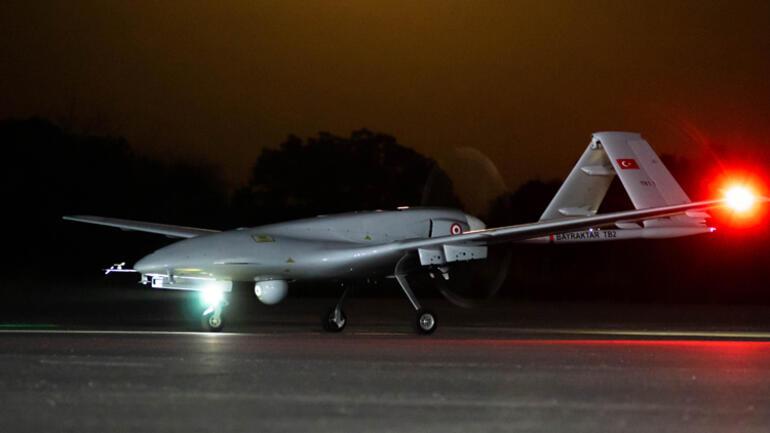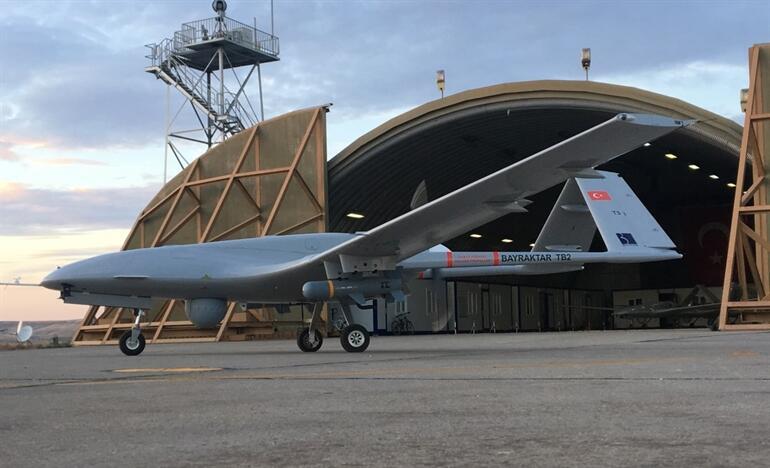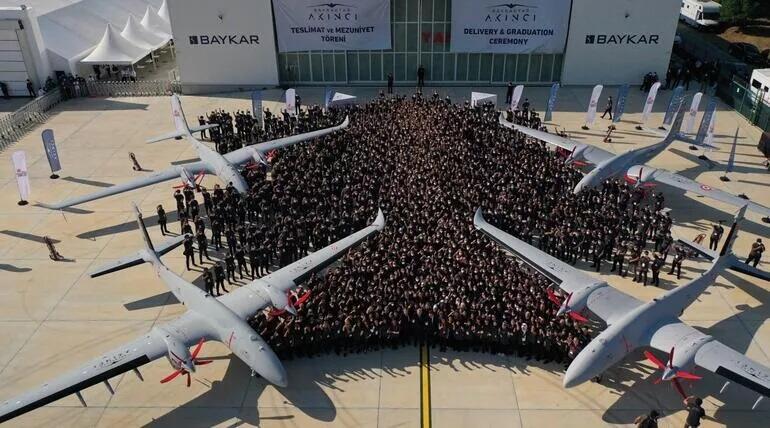Turkish-made Unmanned Aerial Vehicles (UAVs), which are seen to be effective in conflicts in various parts of the world. Africa Demand from other countries is also increasing.
Before the Western-sourced heavy weapons and rocket launchers began to arrive against Russia’s invasion of Ukraine, the Kyiv government had one weapon it could use: Bayraktar TB2 UAVs.
This Turkish-made weapon proved its effectiveness, helping Azerbaijan defeat the Armenian armored forces and retake large lands in the Nagorno-Karabakh war in 2020.
However, Bayraktar admiration is not limited to Eastern Europe and the Caucasus.
In the past weeks, Bayraktar TB2 shipments were made to Togo, a West African country struggling to prevent the infiltration of jihadist groups advancing south from Burkina Faso.
class=”medianet-inline-adv”>
In May, Niger purchased 6 TB2s for its military operations against rebel groups in the Sahel region south of the Sahara Desert and around Lake Chad.
Other African customers of Bayraktar include Ethiopia, Morocco and Tunisia, while Angola also expressed its interest.
However, these powerful surveillance and offensive weapons were first used on the continent in Libya in early 2019. Government forces based in Tripoli, recognized by the United Nations, stopped the rebels led by General Khalifa Haftar in the east with the help of these weapons.
For African buyers, especially poor countries, UAVs offer the chance to build up significant air power without the large equipment cost and lengthy training period required to build a conventional air strike force of piloted jets.
This is particularly attractive for countries such as Niger and Togo.

FIGHTING JIHATIST GROUPS
These countries are on the move and fighting motivated jihadist militants in the scrubland of the Sahel region. Jihadist groups, in mobile units with motorcycles, ambush and attack remote security forces, gendarmerie posts, border crossings and civilian populations.
class=”medianet-inline-adv”>
The Niger army has been grappling with this problem for years and is fighting militants on the border between Burkina Faso and Mali, just hours from the capital, Niamey.
Government troops are also fighting hard to protect the southeast of the country from attacks by Boko Haram and the Islamic State of the West African Region (ISWAP).
For Togo, however, the jihadist threat is relatively new and alarming.
Over the past decade, jihadist militant groups’ activities have been confined to the central Sahel (Mali, Burkina Faso, and Niger) and the interior of coastal countries such as Ivory Coast, Ghana, Togo, and Benin.
Recently, however, the picture has begun to change as armed groups spread across much of Burkina Faso and into rural areas along the border with these four states.
class=”medianet-inline-adv”>
Towards the end of 2019, security forces discovered data that militants had infiltrated northern Togo.
Initially, the fighters were hiding only to rest and gather strength, but the Lome government, like other governments on the West African coast, was concerned that the threat could escalate.
Neighboring Ivory Coast suffered a jihadist attack that killed 19 people in the resort town of Grand Bassam in 2016, followed by attacks and clashes with security forces in the northeast in 2020.
A local wildlife guide was killed when militants kidnapped two French tourists in Pendjari National Park in Benin. Two French soldiers were killed in the shootout while the tourists were later rescued at the Burkina Faso border.
class=”medianet-inline-adv”>

CHANGED THE TABLE OF TERROR
The first direct raid on Togo took place in Sanloanga last November. Then on May 11, dozens of militants attacked an army post in Kpék-pakandi, near Burkina Faso, killing eight soldiers and injuring 13.
The soldiers responded, killing some of the attackers. In June, the government declared a state of emergency in Savanes, Togo’s northernmost region.
However, this was not enough to deter jihadists who operate in the border region and are thought to be affiliated with Jamaat Nusra al-Islam and Muslim (JNIM), a group of jihadist armed groups based in Mali. In another incident in July, two soldiers were killed.
class=”medianet-inline-adv”>
President Faure Gnassingbé toured the area for morale boosting. However, as in other parts of the Sahel affected by the violence of the jihadists, some local people who have been badly affected by the events are leaving their villages.
The regime, accustomed to monopolizing power for decades, even felt the need to negotiate with opposition parties in an effort to develop a unified national strategy to deal with the militant threat.
But ultimately there has to be the direct use of military force as well. At this point Bayraktar UAV‘s step in and provide Togo, like Niger, with its own national air surveillance capability to detect groups of militant fighters and launch attacks against them.

DIPLOMATIC ATTRACTION TOOL
The use of UAVs in the Sahel region is not new. Both France and the US have UAV bases in Niger operating to support the government’s security strategy.
For larger powers, such as Ethiopia, where the federal government is battling the Tigray People’s Liberation Front, drones are important tools to expand overall military capacity.
For both Togo and Niger, a supply partnership with Turkey is also politically beneficial in easing public anxiety about reducing reliance on close security partnerships with former colonial power France.
Ankara also has its appeals: “UAV diplomacy” and military partnership have become an important tool in President Recep Tayyip Erdogan’s foreign policy towards the south of the Sahara, complementing longer-standing policies such as the construction of the airport and other key infrastructures.
.
